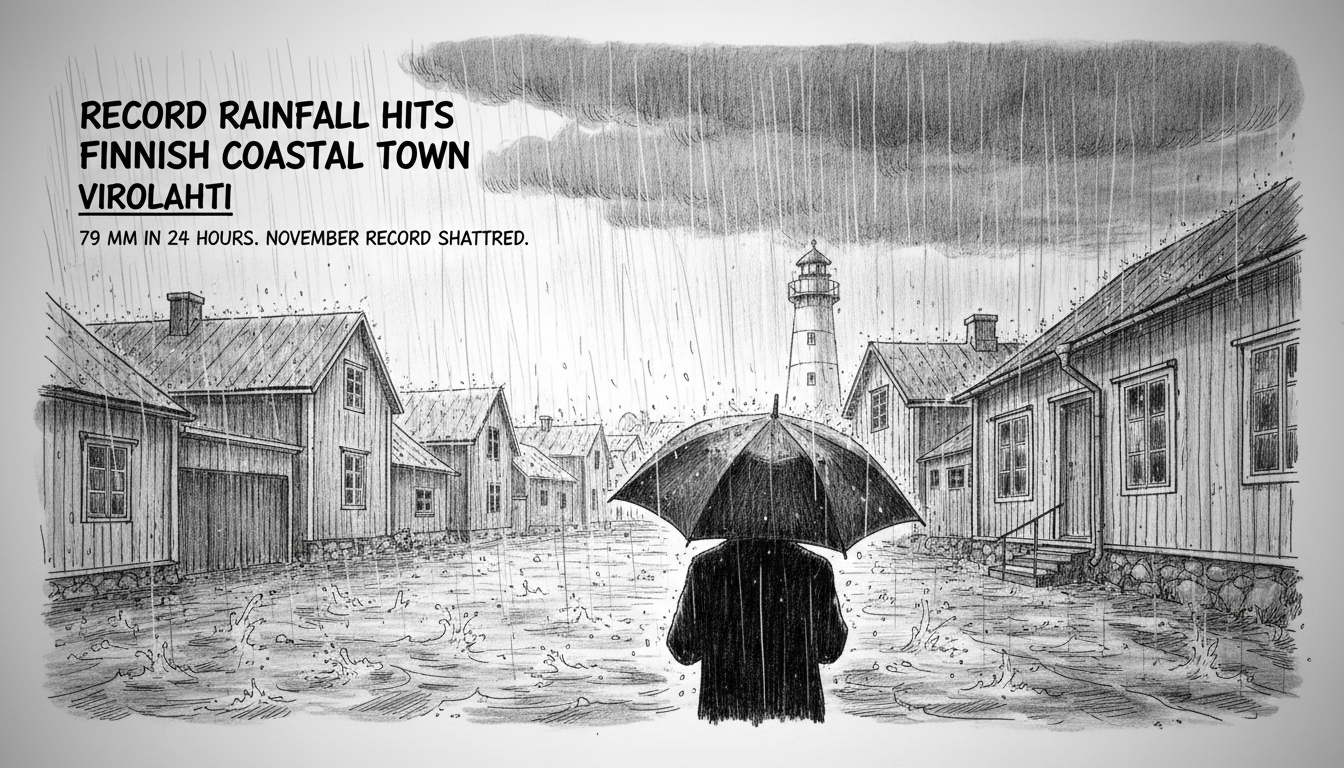A historic rainfall event soaked the Finnish coastal town of Virolahti this week. The Kymenlaakso region town recorded 79 millimeters of precipitation within 24 hours. This shattered the previous November daily rainfall record set in 1971.
The Finnish Meteorological Institute reported a persistent band of showers moving across the Gulf of Finland. Meteorologist Eveliina Tuovinen explained the weather phenomenon in a statement. "New showers kept arriving from the sea in a ribbon-like formation," she said. "That's why such large amounts accumulated. The shower band is still there, but in a slightly different location."
The rainfall measurement of 79 millimeters means 79 liters of water collected on every square meter of surface area. If spread evenly, this would create a water layer nearly 8 centimeters deep.
This extreme weather event reflects broader climate patterns affecting Finland. While southern Finland has experienced typical November rainfall overall, Lapland has seen above-average precipitation. Climate change is pushing winter's arrival later each year. "We're seeing fewer snowy days and freezing temperatures," Tuovinen noted.
The previous record of 52.8 millimeters stood for over five decades from 1971. Another close call occurred in 2020 when Tornio's Kaakkuri district measured 51.7 millimeters. The substantial margin by which the new record exceeds previous measurements highlights the event's exceptional nature.
For international readers, understanding Finnish climate context matters. Finland's location between continental and maritime climate zones creates variable weather patterns. Coastal towns like Virolahti often experience different precipitation patterns than inland areas. Climate scientists have predicted increased rainfall intensity across Nordic countries as global temperatures rise.
Local authorities monitor such extreme weather events closely. Heavy autumn rains can cause flooding in low-lying areas. They also impact agriculture and transportation infrastructure. The record-breaking downpour serves as a reminder of how climate change manifests in specific regional events.
What makes this rainfall particularly notable is its timing. November typically brings colder temperatures and increasing snowfall rather than heavy rain. The record suggests shifting seasonal patterns that could affect everything from winter sports to spring flooding risks.
Residents and officials will watch whether this event represents an outlier or a new normal. Climate data from recent decades shows increasing precipitation across much of Finland. The broken record adds another data point to this concerning trend.

